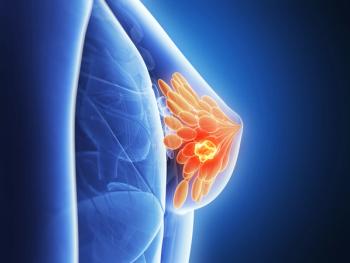
Study Links Racism With Increased Risk of High Postpartum Blood Pressure
Key Takeaways
- Structural and interpersonal racism are associated with increased postpartum blood pressure, exacerbating racial and ethnic disparities in maternal health outcomes.
- Gendered racial microaggressions significantly impact postpartum blood pressure, with stronger associations observed in the later postpartum period.
Although the research focused on Black communities in the United States, there is also evidence linking racism and blood pressure for patients who are Asian or Hispanic.
Structural racism, as well as interpersonal racism, have been associated with an increase in postpartum blood pressure, potentially linking inequalities to postpartum morbidity, mortality, and cardiovascular diseases, according to results of a study published in Hypertension.1
"It is well-known that Black, Hispanic, and South Asian women experience microaggressions during health care. It is not as well known whether these microaggressions may have an association with higher blood pressure,” Teresa Janevic, PhD, MPH, an associate professor of epidemiology at Columbia University Mailman School of Public Health in New York, said in a news release.2
According to the study authors, postpartum hypertension has become a key factor in racial and ethnic inequalities for maternal mortality. They report that the maternal mortality rate was 2- to 3-times higher for Black birthing patients compared with non-Hispanic White birthing patients. Although there is research focusing on Black people in the United States, there is also evidence suggesting the association of racism and blood pressure for patients who are Asian or Hispanic. The authors note that there is limited evidence of this association in the postpartum period.1
Investigators compiled data from 4 maternity hospitals in New York City and Philadelphia. Birthing patients with and without hypertensive disorders of pregnancy (HDP) were included to determine associations between gendered racial microaggressions and postpartum blood pressure. There were 373 birthing individuals included in the study, with recruiting taking place before postpartum discharge between March 2022 and October 2022. Individuals were followed for 3 months; were Asian, Black, or Hispanic; and had a cell phone.1
Individuals evaluated their blood pressure twice a day and texted the results via a cellphone for 10 days, then twice weekly for days 11 through 90. To evaluate gendered racial microaggressions (GRM), investigators used the Gendered Racial Microaggression Scale (GRMS), which included 26 items on a frequency scale of 0 (never) to 5 (once per week or more). Furthermore, investigators used the Structural Racism Effect Index (SREI) to measure place-based structural racism., including 9 domains of built environment, criminal justice, education, employment, housing, income and poverty, social cohesion, transportation, and wealth.
The full study sample was comprised of 10.5% Asian individuals, 38.6% Black individuals, 40% Hispanic individuals, and 11% who reported another race or ethnicity. Approximately 52.9% were foreign born, according to the study investigators. There were 15% who had less than a high school diploma, 34.3% who had a high school diploma or General Education Development, 24.1% had some college, and 24.4% had a bachelor’s degree or higher.1
Approximately 37.5% of patients reported at least 1 GRM, and those patients had a higher 3-month postpartum mean systolic blood pressure of 120.6 mm Hg and diastolic blood pressure of 74.5 mm Hg compared with 118.47 mm Hg and 73.08 mm Hg for those who did not experience GRM. For the adjusted model, including race–ethnicity, education, body mass index, chronic hypertension, age, and SREI, the systolic blood pressure was 1.98 mmHg and diastolic was 1.21 mm Hg. Investigators also used a model spline for 2 postpartum time periods, 1 to 11 days and 12 to 83.5 days, which showed significant differences for the later period compared with the earlier period. The adjusted systolic blood pressure and diastolic blood pressure was 1.81 mm Hg and 1.15 mm Hg for the first period, respectively, and 2.13 mm Hg and 1.26 mm Hg for the later period.1
“It’s surprising the associations were strongest in the later postpartum period between 12 days and 3 months after delivery. This is an emerging critical period for preventing high blood pressure,” Janevic said in the news release. “Our findings provide further evidence that health care professionals and policies should focus more intensely on improving maternal health care equity. We need high blood pressure monitoring and interventions to extend further into the period after birth when blood pressure may continue to be sensitive to social drivers of health as well as racial microaggressions.”2
Additionally, 4.6% of individuals had chronic hypertension, 20.9% had pregnancy hypertension, and 13.4% had preeclampsia. Investigators reported that GRM differences in blood pressure were greater for those with HDP but were not statistically significant. The highest mean postpartum blood pressure among those who experienced GRM lived in a neighborhood with high SREI and those with the lowest 3-month mean lived in a neighborhood with low SREI and did not experience GRM.1
“The synergistic effects of experiencing gendered racial microaggressions and high levels of place-based structural racism were profound, resulting in a nearly 8 mm Hg higher systolic blood pressure. For many people, this can make the difference between needing blood pressure lowering medications or not,” Natalie A. Cameron, MD, MPH, an internal medicine specialist and instructor in preventive medicine at Northwestern University’s Feinberg School of Medicine, said in a news release. “These results emphasize that hypertension management needs to extend beyond prescription medications.”2
REFERENCES
1. Janevic T, Howell FM, Burdick M, et al. Racism and Postpartum Blood Pressure in a Multiethnic Prospective Cohort. Hypertension. Published online January 9, 2025. doi:10.1161/HYPERTENSIONAHA.124.23772
2. Race- and gender-based microaggressions linked to higher post-birth blood pressure. News release. American Heart Association. January 9, 2025. Accessed January 13, 2025. https://newsroom.heart.org/news/race-and-gender-based-microaggressions-linked-to-higher-post-birth-blood-pressure
Newsletter
Stay informed on drug updates, treatment guidelines, and pharmacy practice trends—subscribe to Pharmacy Times for weekly clinical insights.


















































































































































































































